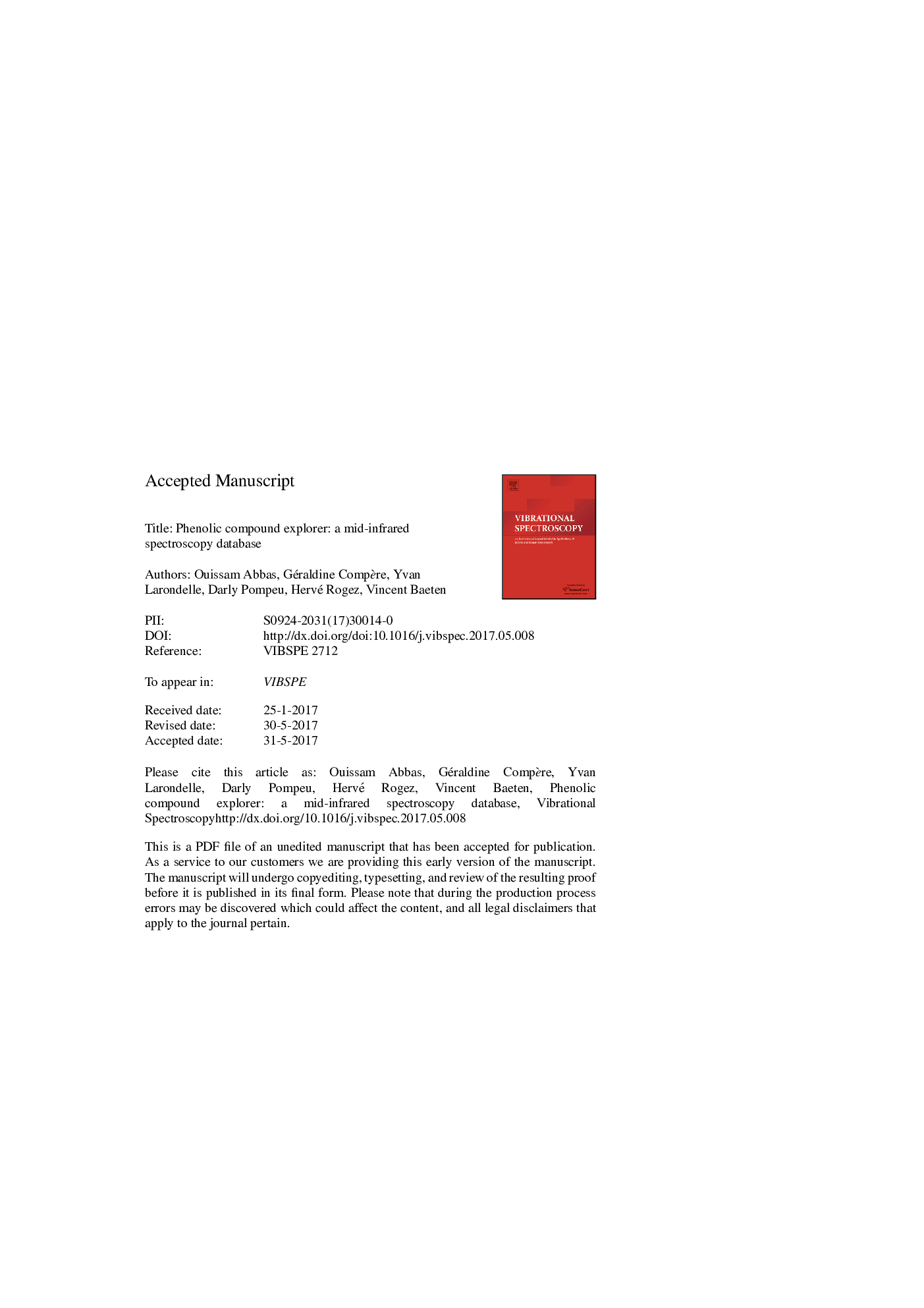| Article ID | Journal | Published Year | Pages | File Type |
|---|---|---|---|---|
| 5141900 | Vibrational Spectroscopy | 2017 | 27 Pages |
Abstract
Analyses of phenolic compounds can be time-consuming and not always very reliable. Mid-infrared (MIR) spectroscopy could be used as a non-destructive tool for food quality analysis and control. The MIR spectra of 36 standard phenolic compounds (13 phenolic acids [hydroxybenzoic and hydroxycinnamic acids], 23 flavonoids [flavonols, flavones, isoflavones, flavanols, and flavanones]) were collected using an Attenuated Total Reflectance (ATR) accessory. Data were collected to build a spectral database in order to identify spectral features of each family of phenolic compounds studied. The phenolic compound spectra showed common spectral bands associated with aromatic six-membered rings and phenol moieties. The bands were numerous between 1640 and 700 cmâ1, leading to an overlap with other signals specific to different families. The methoxy group present in some phenolic compounds showed bands between 1470 and 950 cmâ1. The phenolic acids were characterized mainly by bands of unsaturated carboxylic acids, esters and alkenes, whereas flavonoids were characterized mainly by bands associated with benzopyrylium, Benzo-γ-pyrone and 2-phenyl-3,4-dihydro-2H-chromen-3-ol vibrations. A comparison of flavonoids with phenolic acids showed that the latter could be distinguished by bands of carboxylic acids between 1755 and 1630 cmâ1. Flavonoids were characterized by numerous peaks in the 1650-1400 cmâ1 region and at spectral frequencies inferior to 1200 cmâ1. Principal Component Analysis (PCA) was performed on the MIR spectra, resulting in good discrimination of the families of the studied flavonoids and phenolic acids. The spectral regions 1755-1400 cmâ1 and 1000-870 cmâ1 were of great importance in distinguishing the studied families of phenolic compounds. The study allows starting to build a MIR spectral database for phenolic compounds as bioactive components of food.
Related Topics
Physical Sciences and Engineering
Chemistry
Analytical Chemistry
Authors
Ouissam Abbas, Géraldine Compère, Yvan Larondelle, Darly Pompeu, Hervé Rogez, Vincent Baeten,
